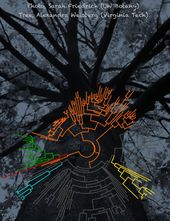Difference between revisions of "Maeda Lab:Publications"
From Maeda Lab
| Line 16: | Line 16: | ||
<h3><font>Publications</font> ('''*'''corresponding author)</h3> '''[http://scholar.google.com/citations?user=uQBb60kAAAAJ Google Scholar citations]''' | <h3><font>Publications</font> ('''*'''corresponding author)</h3> '''[http://scholar.google.com/citations?user=uQBb60kAAAAJ Google Scholar citations]''' | ||
| − | <ol> | + | <ol>[[Image:PlantCellcover.jpg|right|170px|]] |
| − | <li>'''Dornfeld C.''', Weisberg A.J., Ritesh KC, Dudareva N., Jelesko J.G., '''Maeda H.A.*''' (2014) Phylobiochemical Characterization of Class-Ib Aspartate/Prephenate Aminotransferases Reveals Evolution of the Plant Arogenate Phenylalanine Pathway [http://www.plantcell.org/cgi/content/short/tpc.114.127407?keytype=ref&ijkey=2lzNDpqqYQx7ciD '''''Plant Cell''''' | + | <li>'''Dornfeld C.''', Weisberg A.J., Ritesh KC, Dudareva N., Jelesko J.G., '''Maeda H.A.*''' (2014) Phylobiochemical Characterization of Class-Ib Aspartate/Prephenate Aminotransferases Reveals Evolution of the Plant Arogenate Phenylalanine Pathway [http://www.plantcell.org/cgi/content/short/tpc.114.127407?keytype=ref&ijkey=2lzNDpqqYQx7ciD '''''Plant Cell''''' 26, 3101-3114]</li> |
:<font color="#404040"> ''Plants use phenylalanine to produce abundant and diverse phenylpropanoid compounds, such as flavonoids, tannins, and lignin. Through phylogenetic, bioinformatic, and biochemical analyses of prephenate aminotransferase enzymes from plant and bacterial lineages, this study revealed unique evolutionary history and molecular changes of key enzymes responsible for phenylalanine biosynthesis in plants. The findings assist the rational design of antimicrobial drugs and herbicides, but also highlight the use of phylobiochemical characterization of enzymes from deep taxonomic lineages in determining key molecular changes that lead to the evolution of new metabolic pathways.'' </font> [http://www.news.wisc.edu/23041 UW news release]. | :<font color="#404040"> ''Plants use phenylalanine to produce abundant and diverse phenylpropanoid compounds, such as flavonoids, tannins, and lignin. Through phylogenetic, bioinformatic, and biochemical analyses of prephenate aminotransferase enzymes from plant and bacterial lineages, this study revealed unique evolutionary history and molecular changes of key enzymes responsible for phenylalanine biosynthesis in plants. The findings assist the rational design of antimicrobial drugs and herbicides, but also highlight the use of phylobiochemical characterization of enzymes from deep taxonomic lineages in determining key molecular changes that lead to the evolution of new metabolic pathways.'' </font> [http://www.news.wisc.edu/23041 UW news release]. | ||
<li>Luby C., '''Maeda H.A.''', Goldman I. (2014) Genetic and Phenological Variation of Tocochromanol (Vitamin E) Content in Wild (''Daucus carota'' L. var. ''carota'') and Domesticated Carrot (''D. carota'' L. var. ''sativa'') [http://www.nature.com/articles/hortres201415 '''''Horticulture Research''''' 1:15]</li> | <li>Luby C., '''Maeda H.A.''', Goldman I. (2014) Genetic and Phenological Variation of Tocochromanol (Vitamin E) Content in Wild (''Daucus carota'' L. var. ''carota'') and Domesticated Carrot (''D. carota'' L. var. ''sativa'') [http://www.nature.com/articles/hortres201415 '''''Horticulture Research''''' 1:15]</li> | ||
Revision as of 21:35, 12 November 2014
Publications (*corresponding author)Google Scholar citations
|

